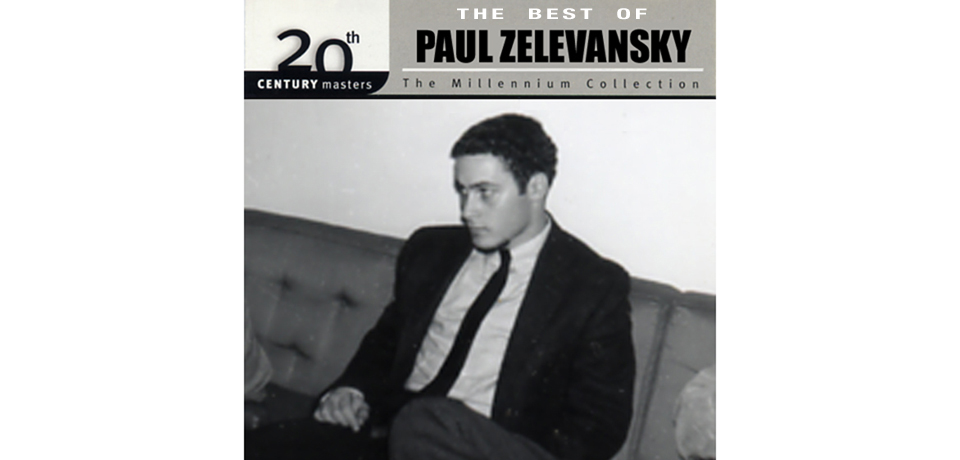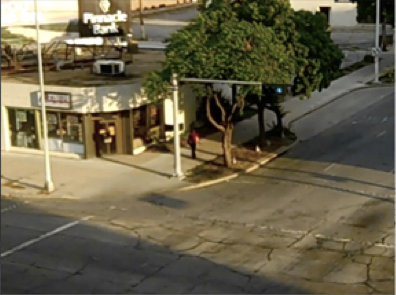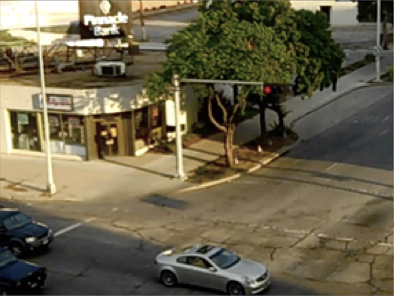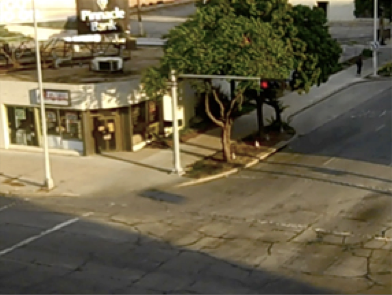In the summer of 2009, my wife and I drove cross-country from Los Angeles to Pittsburgh, PA. After a night in Las Vegas, we traveled north to Provo, Utah, a small college town south of Salt Lake City. Looking out the window of the Marriott Provo, I shot a short video of the intersection of N. University and 100th North Avenue, marked by a branch of Pinnacle Bank.
From the Pinnacle Bank website:
“COMMUNITY STRENGTH. YOUR OWN BACKYARD.”
Our story began in 1938, when George Dinsdale–a farmer and feedlot owner in Nebraska—saw that his community needed financial help to make it through the Great Depression. He opened a bank and served his community the way he and his neighbors lived: with a typical, down-to-earth, person-to-person approach.
Well, it was the right crop in the right soil, so it grew…
My intention with the video was to record an everyday event (or non-event) and so I waited for a green light to generate a story. As the light changed, a man in a red shirt walked up the street away from the intersection. When the light switched to yellow, the faint sounds of the street were joined by my wife’s voice complaining—to no one in particular—about the voice mail feature on her new mobile phone. As the light shifted to red, the man in the red shirt passed under some trees as a silver sedan paused at the corner and then entered the intersection from the left. After a short gap in time, three more cars entered in staggered formation from the same direction. They crossed the intersection and went out of sight as the man in the red shirt neared the top right corner of the frame.
Multiple times a day, every day, at this intersection, and in cities and towns, large and small, all around the globe, traffic lights cycle between green, yellow, and red; a commonplace, civic ritual defined and characterized by anonymous predictability. While each stopping and starting matters primarily to those involved, when the chain of expectations is broken by a malfunctioning light, bad weather, an accident, or the choice by drivers or pedestrians to disobey the law, the equation shifts. A decorum that is largely controlled by the traffic system may turn into a “person to person” negotiation–civil or chaotic–or if it is late at night and the streets are empty, an act of passivity or defiance: why wait for the light if no one else is there?
In recalling this now, I am struck by a sense of sweet longing for the anonymity and anomie of the motel room on the road: not home, but a temporary sanctuary on the way to somewhere else. Outside the Marriott Provo on that morning, the circadian rhythm of traffic seemed both timeless and an easy metaphor for the ineffable flow of life. Yet the presence of the man in the red shirt brought a stranger into the narrative. Without knowing anything about him, he became an Everyman also on his way to somewhere for some reason. This is either a poignant reminder of how life unfolds for others, as it unfolds for us–we watch and are watched–or an easy projection from a comfortable distance: I see him, but he can’t see me.
It must be granted that there is some value in mystification, labyrinth, or surprise in the environment. Many of us enjoy the House of Mirrors, and there is a certain charm in the crooked streets of Boston. This is so however, only under two conditions. First, there must be no danger of losing basic form or orientation, of never coming out. The surprise must occur in an over-all framework; the confusions must be small regions in a visible whole…
(The Image of the City, Kevin Lynch, 5)
After 14 years of living in Los Angeles, we were moving to Pittsburgh because my wife was beginning a new job, so this road trip was not a vacation from the everyday routine, but a rupture, a very large leap into a new life in a new city and whatever attendant risks, benefits, and unknowns that might entail. I was not in any way happy about the change. The conceptual map I carried with me from Los Angeles–the local images and markers characterized by Kevin Lynch as paths, edges, districts, nodes, and landmarks–would not be of any use in Pittsburgh, nor did they apply to the view from my hotel room. While I believe self-reflection is an unalloyed good, sometimes self-pity makes it into the mix. Yet even sadness and mystification can be grist for the mill, and so in this sense, a window of opportunity opened up for me.
Why someone would choose to be an artist or writer is a complex question that assumes an inquiring audience, but I will advance one answer here: Artists and writers, like everyone else, are going from here to there, meeting obstacles, avoiding pitfalls, bridging gaps, making adjustments along the way. Like the man in the red shirt, we all have a sense of our own significance or insignificance, our successes and failures that we deposit in our personal autobiographical memory banks no doubt defined by multiple corridors, signals, and intersections. Artists and writers, on the other hand, may be more likely to feel entitled to believe that their insights and presentations are built on deeper understandings. They are after all presumed by the public, and the Random House dictionary, to have special access to “imagination: as in “a creation of the mind; especially: an idealized or poetic creation,” even if that is sometimes based on a “fanciful or empty assumption.” In the face of uncertainty, artists and writers take the long, hopeful view.
Consider that you have stayed with this essay so far, committing several minutes of your time to my life. Thank you in advance, but I might also say that beyond the time spent writing and editing this piece, I have made an unexpected, if unasked for, investment in the man in the red shirt that will never be acknowledged or returned. This is a loss in the existential sense, but appropriate as I was just passing through Provo like any tourist or commuter heading home to his house, backyard, and soil.
(PZ, March 2011)




